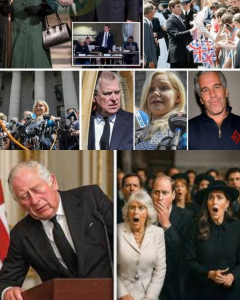The palace’s one sentence landed like a guillotine—formal, final, and deafening in its brevity. In the hush that followed, the Lawson family’s reply erupted as wildfire: a daughter’s erased truth, a mother’s clenched fist, a father’s voice cracking with years of swallowed rage. The Crown expected obedience; it got reckoning. Their statement didn’t plead—it demanded the buried secrets rise. The air crackled, the gates trembled. One thunderclap from the throne, one inferno from the family. How many locked doors swing open next?

The palace’s one-sentence decree landed like a guillotine—formal, final, and deafening in its brevity. It carried the polished chill of centuries, each word sharpened to sever emotion from consequence. For a moment, the world stood still. Then came the response—raw, trembling, and unstoppable.
The Lawson family, long kept at the margins of royal narrative, refused to bow this time. Their reply wasn’t a statement of grief—it was a manifesto of reckoning. Every syllable struck like a match against the Crown’s iron veil. It began with the image of their daughter, her life erased by protocol and her name reduced to a footnote in sealed archives. Years of silence had hollowed them, yet in that void, a fire had been quietly building.
When the mother spoke, her words shook with fury restrained too long. The father’s voice, brittle with exhaustion, cut through like broken glass. They didn’t speak as subjects—they spoke as survivors. And in doing so, they dismantled the very structure that demanded their silence. The statement, released without ceremony, spread like wildfire across the digital landscape. Within hours, the phrase “we will not be quiet again” trended globally.
Inside the palace, the air turned to ice. The institution had thrived on control—on managing narratives, on shaping history before it was even written. But the Lawsons’ defiance refused to be edited. The Crown had expected obedience, but what it received was a reckoning centuries in the making. Advisors scrambled, spokespeople hesitated. Every prepared line sounded hollow against the family’s raw truth.
Outside, the world shifted. Crowds gathered at the gates not in protest, but in witness. Commentators debated the breaking point between tradition and humanity. Some defended the old order; others saw its foundations crumble in real time. It wasn’t just about one family anymore—it was about every secret ever buried under the weight of titles and the comfort of denial.
The daughter’s story—once suppressed—now pulsed through the public consciousness. Each revelation, each rediscovered document, carved deeper into the Crown’s stone façade. Power, once unquestioned, began to tremble under the weight of truth. The palace that had survived wars, betrayals, and scandals found itself shaken not by rebellion, but by remembrance.
Yet in the Lawsons’ words, there was no triumph. Only ache. “This is not vengeance,” they wrote. “It’s truth, unchained.” Their pain was not a weapon, but a mirror held up to power—a reflection the empire could no longer look away from.
By nightfall, lights still burned behind the palace windows. The silence inside was no longer one of control, but of fear. Outside, the echo of a family’s defiance refused to fade.
No fanfare followed, no victory announced. But something irreversible had begun—the quiet dismantling of untouchable power.
The Crown had spoken with authority. The Lawsons had answered with humanity.
And in that collision, history shifted its course forever.
Leave a Reply